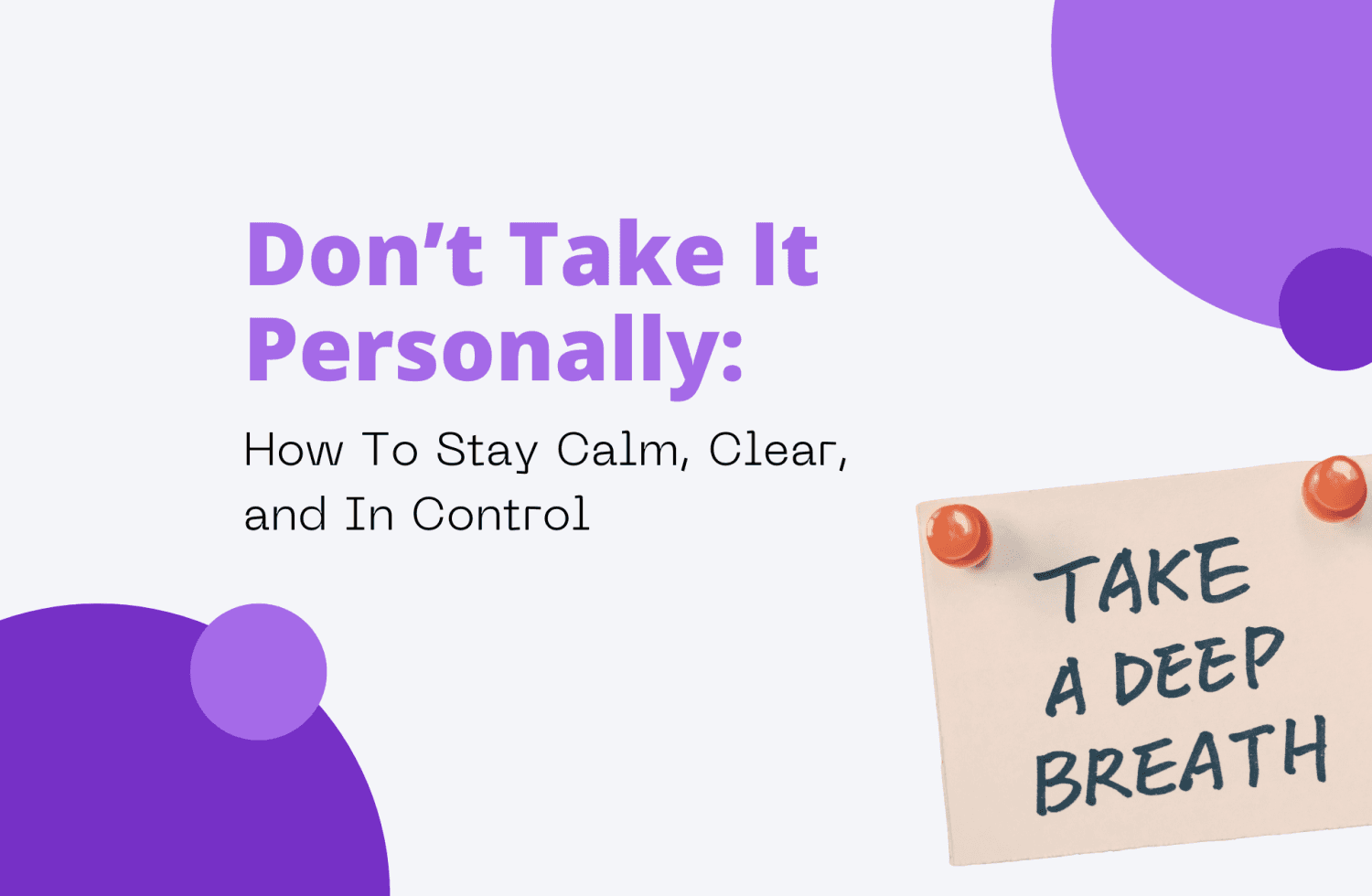Click Here to Download the PDF.
If feedback feels like a surprise on your team, it’s not because people are bad at giving it.
It’s because it only happens when something goes wrong.
Most one-on-ones turn into quick updates, skipped meetings, or rushed check-ins squeezed between other priorities.
Over time, those missed moments add up.
Progress becomes invisible. Feedback becomes delayed.
And by the time someone finally speaks up, the message lands as criticism instead of collaboration.
Here’s the truth: feedback isn’t an event. It’s a rhythm.
And when done right, that rhythm doesn’t just keep people performing — it keeps them connected.
The best teams don’t wait for reviews or crises.
They build a weekly habit of feedback that’s calm, consistent, and forward-looking.
It’s not about perfection or performance—it’s about partnership.
So, how do you make that habit stick?
It starts with a rhythm I teach every team I work with — a system called P.A.C.E.
The P.A.C.E. Loop: Turning Feedback Into a Weekly Habit
The best one-on-ones don’t happen by accident.
They follow a clear loop that keeps the conversation balanced and useful for both sides.
The P.A.C.E. Loop — Proof, Ask, Clarify, Experiment — turns messy meetings into structured progress sessions that actually move things forward.
1. Proof — Start with what’s working.
Every great one-on-one starts with evidence of progress, not a list of problems.
When employees come prepared with a short Got-Done Card — three bullet points of what they accomplished and one number that proves it — the tone shifts immediately.
Managers see proof of progress instead of assumptions, and employees remind themselves of the impact they’re already making.
This step matters because people rarely stop to notice their own wins.
Research from The Progress Principle shows that small, visible victories are the single biggest motivator at work.
They fuel pride, energy, and forward momentum.
When you start here, you set the tone: this meeting isn’t about defending your work. It’s about learning from it.
2. Ask — Identify the next obstacle.
Once progress is visible, the next question is simple: What’s getting in your way?
Managers should lead with, “How can I help?”
Employees should respond with, “I’m having trouble with ___ and need ___.”
That question is deceptively powerful.
It puts ownership and clarity back into the conversation.
Instead of guessing what people need, managers get a clear view of what’s blocking progress.
And instead of staying silent, employees have permission to ask for help — directly and without fear.
When both sides use this language, they’re not reacting to problems. They’re solving them in real time.
3. Clarify — Make feedback specific and safe.
Feedback often falls flat because it’s vague.
“Good job” doesn’t build growth, and “You need to communicate better” doesn’t tell anyone how.
That’s why the best managers and teams use SBII: Situation, Behavior, Impact, Inquiry.
It sounds like this:
“In yesterday’s meeting (Situation), you interrupted before the client finished (Behavior), which made them pull back a bit (Impact). What were you aiming for?” (Inquiry).
This simple framework removes emotion and replaces it with clarity.
It’s descriptive, not judgmental. It creates space for learning instead of defensiveness.
And when you follow it with one feedforward idea — something to try next time — you turn feedback into direction.
That’s how teams get better, faster.
4. Experiment — End with one small test.
Every one-on-one should end with a single, specific action.
Not a long list. Not a new project. Just one small test you can measure by next week.
Something like:
“If we move the design sync to earlier in the week, will it reduce the number of late edits?”
The test should take less than two hours to try and have a visible result. That’s it.
Because the point of feedback isn’t more talk — it’s more traction.
These micro-experiments are where growth becomes real.
They let you track progress, celebrate wins, and course-correct without stress.
When both sides know exactly what to test next, accountability becomes natural.
Real Workplace Example: How Weekly Feedback Saved a Stuck Team
A few months ago, I worked with a product team that was talented, motivated, and completely misaligned.
They were constantly behind on deliverables, and tension was growing quietly beneath the surface.
Managers thought the team wasn’t taking ownership.
The team thought managers didn’t listen.
One-on-ones, when they happened, were spent discussing status updates — not development, not progress, not clarity.
No one was learning. No one was improving.
When I stepped in, we rebuilt everything around one rule: feedback must happen weekly, not occasionally.
We started by blocking 30-minute weekly one-on-ones for every team member.
No cancellations, no “we’ll skip this week.”
If a manager was too busy, they rescheduled within 48 hours.
Consistency mattered more than length.
Then, we implemented the P.A.C.E. loop:
- Every session started with proof — each person brought three wins and one measurable result.
- Then came the “ask” — one specific area where they needed help.
- Managers used SBII to give targeted, actionable feedback.
- Finally, we ended with a small experiment to try before the next meeting.
The shift was immediate.
By week three, people were speaking more openly.
Managers were spending less time fixing and more time guiding.
The energy in the team changed — meetings became a space for growth instead of correction.
The key wasn’t a new process or tool.
It was the rhythm.
Feedback stopped being a surprise.
It became a habit.
Tools That Make It Easier
You don’t need to reinvent how you work to make this system stick.
The right tools can help teams stay consistent, accountable, and aligned.
Book: Radical Candor by Kim Scott
A modern classic for anyone who leads people.
Kim Scott breaks down how to care personally while challenging directly — a balance that defines every great one-on-one.
TED Talk: The Secret to Giving Great Feedback by LeeAnn Renninger
In under ten minutes, Renninger explains the psychology behind feedback that sticks.
Her practical, science-based formula helps teams give feedback that’s honest, clear, and actually heard.
Podcast: The Modern Manager — Practical Tips for Better One-on-One Meetings with Steven Rogelberg
A research-backed conversation about why most one-on-ones fail and how to fix them.
Rogelberg shares easy, evidence-based tips for structuring conversations that build real progress.
AI Tool: Fellow (fellow.ai)
A powerful meeting assistant that lets teams create shared agendas, document wins, and track commitments.
It keeps one-on-ones transparent and helps everyone stay accountable week after week.
Copyable Playbooks
For Managers
- Keep your one-on-ones sacred — don’t cancel them.
- Start human. Ask how they’re doing before you ask what they’re doing.
- Listen more than you talk.
- Track wins before you discuss what’s next.
- Ask: “What’s working? What’s hard? How can I help this week?”
- Use the SBII method for feedback.
- End every session with one testable next step.
For Employees
- Bring proof: three wins and one measurable change.
- Start with, “Here’s what went well this week.”
- Ask, “Here’s what I’m stuck on — can we talk through it?”
- Be clear about what you need help with.
- Request one piece of feedback you can apply right away.
- End with, “Here’s what I’ll test before next time.”
When both sides commit to these steps, one-on-ones stop being just another meeting.
They become a shared space for momentum — where each week builds on the last.
The Deeper Shift: Turning Feedback Into Partnership
Feedback done right is not about control. It’s about connection.
When you make feedback a weekly habit, you create a workplace where communication feels safe, not stressful.
Where wins are recognized, not forgotten.
And where small steps forward matter just as much as the big ones.
The real transformation happens when both sides — manager and employee — show up prepared, honest, and invested.
Over time, those conversations build something stronger than performance: they build trust.
Psychological safety and visible progress are the two most powerful predictors of team success.
When people can speak up without fear and see their own progress reflected back at them, motivation becomes self-sustaining.
That’s the deeper point of one-on-ones.
They’re not about checking boxes.
They’re about building relationships where accountability and growth coexist.
When feedback becomes a rhythm, not a surprise, everyone moves forward together — faster, smarter, and stronger.
Download the Infographic
Want to keep this framework close at hand?
You can download the full One-on-One Meetings Quick Guide infographic — the same one featured in this article — in a free, printable PDF format.
Click here to download the infographic
It’s the perfect visual reference to help you turn every one-on-one into a conversation that counts — whether you’re leading a team or building your next big step.



